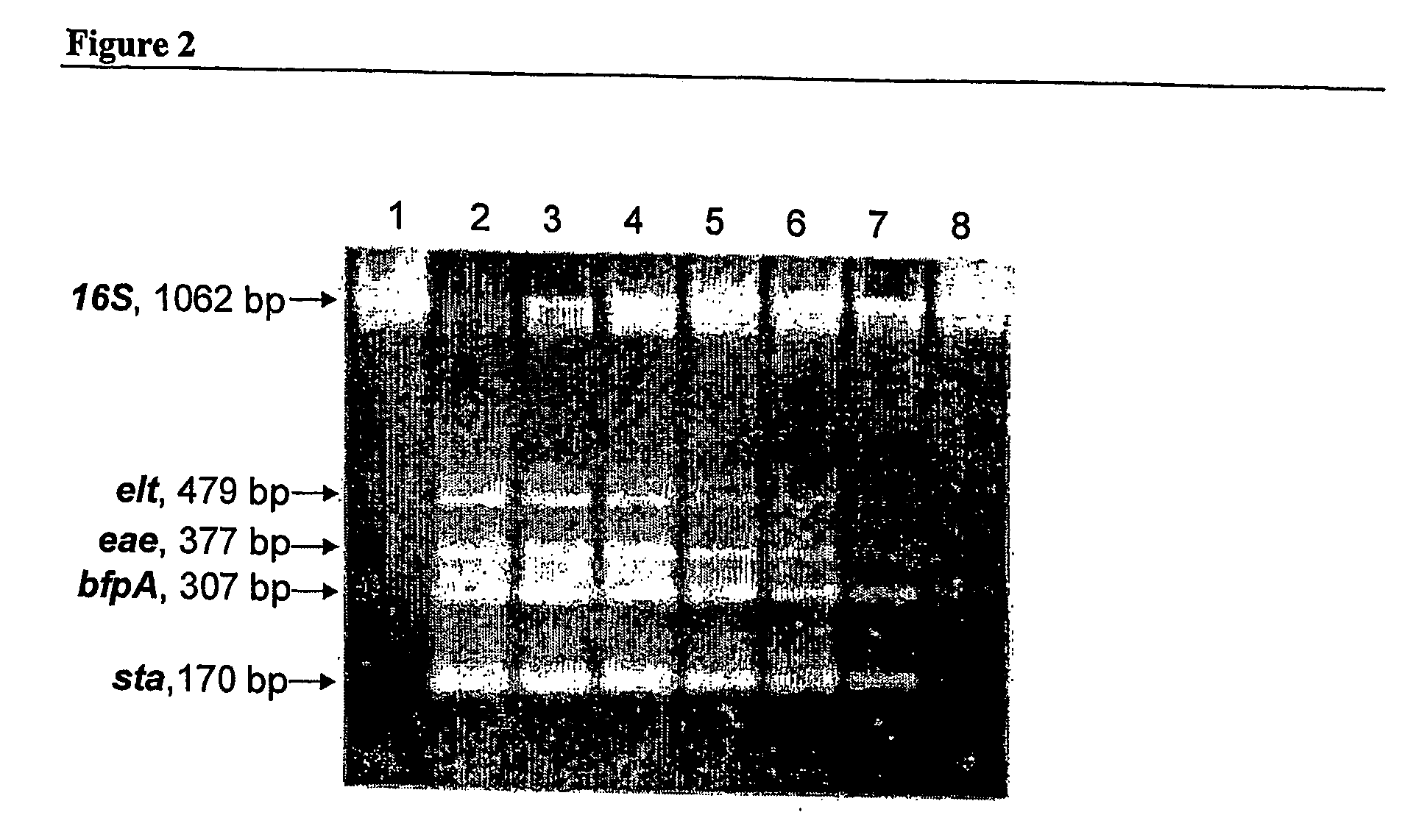Diagnostics of diarrheagenic escherichia coli (dec) and shigella spp
- Summary
- Abstract
- Description
- Claims
- Application Information
AI Technical Summary
Benefits of technology
Problems solved by technology
Method used
Image
Examples
example 4
[0121] DNA purified directly from feces, by separation of magnetic beads that bind bacterial cells followed by cell lysis and ethanol wash (Genpoint A.S, Norway) [0122] Multiplex PCR on the genes encoding the following E. coli virulence factors: ST, LT, Eae, BfpA, VT1, VT2, EhxA and IpaH. [0123] Detection of PCR product by hybridisation to solid-phase capture-probes on ex. nylon membrane, plastic surfaces or DNA chip / microarrays. [0124] This example describes a theoretical procedure for the above technologies.
example 5
[0125] DNA purified directly from feces, by DNA absorption / entrapment in fibrous membranes (FTA Technology, Promega) [0126] Multiplex PCR on the genes encoding the following E. coli virulence factors: ST, LT, Eae, BfpA, VT1, VT2, EhxA and IpaH. [0127] Detection of PCR products by real-time PCR. [0128] This example describes a theoretical procedure for the above technologies.
example 6
[0129] DNA purified directly from feces by use of cell lysis, absorption and elution of DNA from spin columns (ex. QIAamp® DNA Stool Mini Kit, QIAGEN). [0130] Multiplex PCR on the genes encoding the following E. coli virulence factors: ST, LT, Eae, BfpA, VT1, VT2, EhxA and IpaH. [0131] Detection of PCR products by use of capillary electrophoresis [0132] This example describes a theoretical procedure for the above technologies.
PUM
| Property | Measurement | Unit |
|---|---|---|
| Fraction | aaaaa | aaaaa |
| Fraction | aaaaa | aaaaa |
| Fraction | aaaaa | aaaaa |
Abstract
Description
Claims
Application Information
 Login to View More
Login to View More - Generate Ideas
- Intellectual Property
- Life Sciences
- Materials
- Tech Scout
- Unparalleled Data Quality
- Higher Quality Content
- 60% Fewer Hallucinations
Browse by: Latest US Patents, China's latest patents, Technical Efficacy Thesaurus, Application Domain, Technology Topic, Popular Technical Reports.
© 2025 PatSnap. All rights reserved.Legal|Privacy policy|Modern Slavery Act Transparency Statement|Sitemap|About US| Contact US: help@patsnap.com



